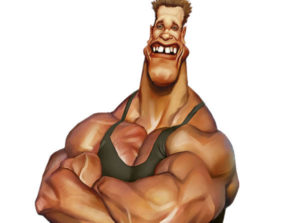Asked and Answered: Questions about Caricature
Welcome to Caricature Information Station. Where we’ll discuss all things caricature. To get things started, here are a few questions about caricature Asked and Answered.
How do you pronounce the word, caricature?
Like this: kerikəCHər That looks complex. The phrase “Care-a-catcher” is in the ball park. A proper pronunciation, with sound provided by google can be found here.
What is caricature?
 A caricature, simply put, is an exaggerated likeness of someone. The caricature will be recognizable as the subject, but features might be emphasized. If a person has a small gap in their teeth, a caricature drawing may depict the gap as quite wide. On the other hand, if the person has smaller than average ears, the caricaturist might draw tiny ears or no ears at all. The features of a person are pushed and pulled towards one extreme or the other with often humorous results.
A caricature, simply put, is an exaggerated likeness of someone. The caricature will be recognizable as the subject, but features might be emphasized. If a person has a small gap in their teeth, a caricature drawing may depict the gap as quite wide. On the other hand, if the person has smaller than average ears, the caricaturist might draw tiny ears or no ears at all. The features of a person are pushed and pulled towards one extreme or the other with often humorous results.
Usually when we talk about caricature were talking about a visual art form, but a caricature can be written or verbal as well.
Here’s an example of literary caricature from Bleak House, by Charles Dickens.
Mr. Chadband is a large yellow man, with a fat smile, and a general appearance of having a good deal of train oil in his system. … Mr. Chadband moves softly and cumbrously, not unlike a bear who has been taught to walk upright.
The description here isn’t meant to be literal. Mr Chadband does he have train oil instead of blood, he’s not the color of a lemon and he walks like a man not a bear. This exaggeration helps Dickens communicate to the reader the feel of character.
A verbal caricature, is something most people are familiar with, but not by this name. This kind of caricature is better known as “doing an impression” of someone one. When someone mimics the halting speech of Christopher Walken or makes a manic face to imitate Jack Nicholson that’s a form of caricature.
https://www.youtube.com/watch?v=0x7P4x3LPUM
When did the caricature art form start?
It’s very probable that humorous drawings of people is as old as drawing itself. Exaggerated drawings of politicians has been found as graffiti on walls in ancient Rome. However, the beginning of caricature as an art form started in Italy in the late 1500s. Baroque painter Annibale Carracci and his brother Agostino, both instructors at Bologna Academy, created exaggerated portraits to make fun of their own art lessons. They applied the Italian words carico which mean ‘to load’ or ‘to laden’ and the word caricare meaning ‘to load’ or ‘to exaggerate’ to these creations, giving us the word caricature.
Does a caricature always make fun of subject, only exaggerating their worst features?

(CC)-Share and share alike
Caricature usually exaggerates the subjects most distinct features, playing on what makes a face distinct and unique.
While caricature and satire are closely linked. Satire isn’t always appreciated. It’s landed artists in prison and worse. Starting in the 20th century a new caricature movement mellowed the artform. While it’s impossible to separate caricature from humor entirely, artists like Al Hirschfeld were captured their subjects with beauty and simplicity. Taking caricatures from being satirical and biting to something far more classy and complimentary.
Caricature now-a-days runs the gambit from acidic snarky political statements, to capturing once-in-a-lifetime events with sweetness and humor. Making caricature an great way to capture any and moment.
